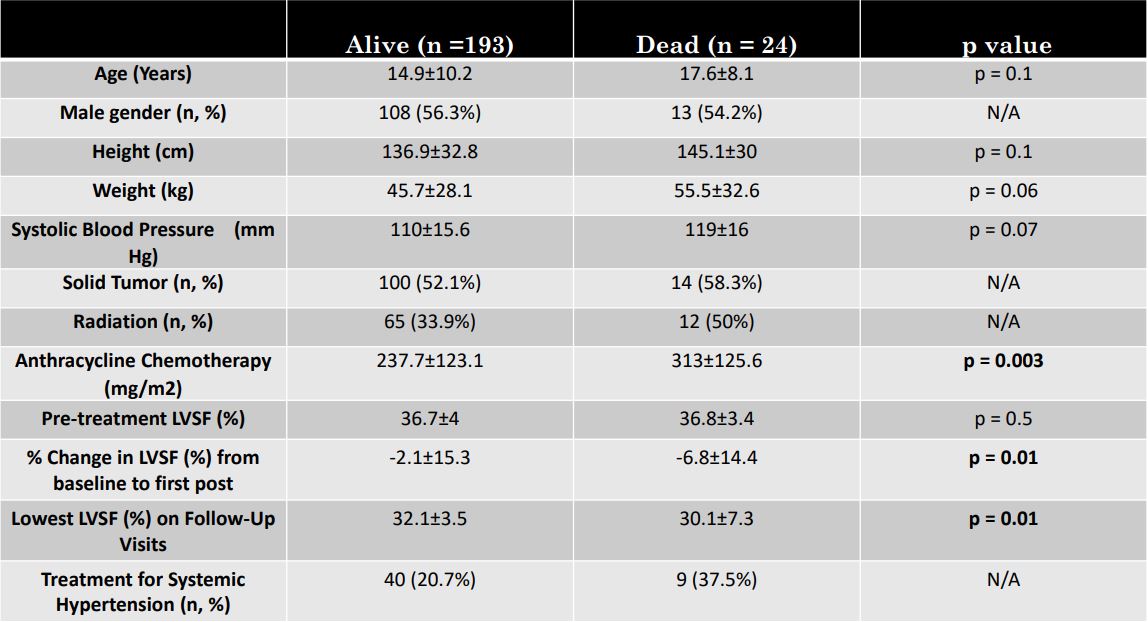Cardiology
Cardiology 1
202 - Characteristics of Pediatric Cancer Patients Who Died During Long-Term Follow-Up
Publication Number: 202.203

Aaron Walsh, MD
Fellow-Pediatric Cardiology
Nationwide Children's Hospital
Columbus, Ohio, United States
Presenting Author(s)
Background:
Childhood cancer is one of the most common causes of disease-related mortality in children. Despite the increasing incidence of childhood cancer, the overall mortality has decreased by more than 50% since 1973 according to the Surveillance, Epidemiology and End Results (SEER) program published in 2015. The increased disease-related mortality is likely multi-factorial.
Objective:
We sought to determine the characteristics of patients followed in our long-term survivor clinic who died compared to those still living.
Design/Methods:
Single-center retrospective review of cancer patients followed in our survivorship clinic. Demographic data, type of cancer, treatment regimen including dose of anthracycline-chemotherapy and exposure to radiation therapy, treatment for hypertension, and change in cardiac function from baseline to post-treatment by left ventricular shortening fraction (LVSF) were collected. Patients were dichotomized to those who remained alive (Group A) and those who died (Group B) during long-term follow-up. Statistical analysis was performed using the Student’s t-test.
Results:
217 patients met inclusion criteria with 193/217 (88.9%) remaining alive at the time of data collection. Table 1 details the demographic, cancer type, treatment, and echocardiographic data. Data for age of death was incomplete so age at third echocardiogram was used and was not different between the two groups. The mortality group was more likely to have solid tumors (58.3% versus 52.1%), more likely to experience radiation therapy (50% versus 34%), and had a higher dose of anthracycline chemotherapy (313±126 mg/m2 versus 237.7±123 mg/m2, p = 0.003). No difference was found in pre-treatment LVSF between the two groups (36.7±4% in Group A versus 36.8±3.4% in Group B, p=0.5). However, the group who died had a statistically significant decline in LVSF on the first follow-up echo (-6.8±14.4% compared to-2.1±15.3%, p=0.01). Treatment for hypertension was more common in those who died (37.5%) versus those who did not (20.7%).
Conclusion(s):
Mortality in cancer patients followed in long-term survivor clinics remains a concern. Identifying modifiable risk factors could lead to improved survival. Having a solid tumor, requiring higher doses of anthracycline chemotherapy, and exposure to radiation were associated with mortality in our single-center cohort. Decline in LVSF from baseline to post-treatment and treatment for hypertension are potential modifiable risk factors for mortality and should be further investigated in larger multi-center settings.
